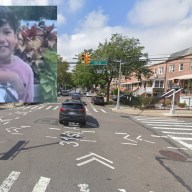Think you know everything about Halloween? Here is some chilling trivia you may not have known.
• Halloween comes from the pagan festival of Samhain. It was believed that on this night the spirits of all those who had died the preceding year would come back to haunt the living. To scare away or appease these spirits, the people began dressing up in fiendish costumes and leaving offerings of food at their door.
• During the 8th century, the Christian church replaced the pagan holiday by naming Nov. 1 “All Saints’ Day” and the night before as “All Hallows Eve”. Eventually, this name became Halloween.
• The carving of Jack-O-Lanterns comes from an 18th century Irish folk tale about a miserly drunkard named Jack who is said to have trapped the Devil in the branches of an apple tree. After Jack’s death, he was not allowed into Heaven, but the Devil wouldn’t accept him either. So Jack was left to wander the night endlessly, lighting his path with a lit piece of coal inside a hollowed out turnip (later turned into a pumpkin).
• Superstitions about vampires have existed from the earliest times and appeared in all cultures. The “Vampir” (vampire) comes from Romanian legends about spirits or demons that left their graves at night to seek and enslave human victims. The vampire could be warded off with a variety of charms, amulets, and herbs and could only be killed by driving a stake through its heart or by cremation. It is from this legend that Bram Stoker wrote his classic “Dracula.”
• In 16th Century France it was believed that several noble families had become Lycanthropes, or Werewolves. After several wolf attacks had occurred on their land, a servant went to the local Bishop and confessed that he’d seen his employers turn into wild dogs. After being captured and tried, the accused “werewolves” were executed with silver rosary beads fired from a musket. This is where the modern myth of the werewolf comes from.
• Unlike other monsters, Frankenstein was not based on any actual person or event. In 1814 Mary Shelley, the author of “Frankenstein,” was traveling through Darmstadt, Germany. While there, she noticed the ruins of an ancient castle owned by a knight named Arbogast Von Frankenstein. She was apparently so taken with the castle that she used its name for the title of her novel about a student who creates an artificial man while exploring the secrets of life in his laboratory.
– Courtesy of ARA Content

































